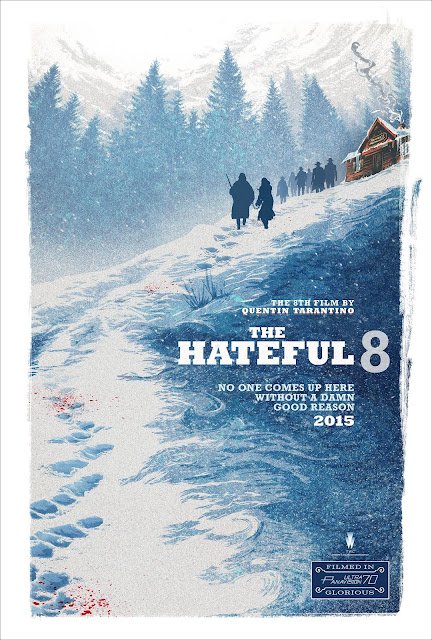The Hateful Eight is the eleventh film to be shot in the Ultra Panavision 70 process (65mm film with 1.25x squeeze anamorphic lenses, for an aspect ratio of 2.76:1), an ultra wide aspect ratio that was used on a few movies in the 1950s and 60s, such as Raintree County (1957), Ben-Hur (1959), Mutiny on the Bounty (1962), It's a Mad, Mad, Mad, Mad World (1963) and The Greatest Story Ever Told (1965). The film to use this extremely rare process was Khartoum (1966) nearly 50 years before. To accomodate Tarantino's filming style, Panavision made a 2000 foot film magazine (double the standard size) for the film's Ultra Panavision 70 cameras. Panavision collaborated with Schneider Optics to design and produce 100 Ultra Panavision projection lenses which would ultimately be needed for the retrofitted roadshow theaters across the USA and Canada. The filmmakers also avoided any use of a digital intermediate; the film was color-timed photochemically by FotoKem, and the dailies were screened in 70mm. At the 2015 San Diego Comic-Con, Tarantino announced that Ennio Morricone would compose the score for the film. Tarantino remarked that it would be the first western scored by Morricone in 40 years since Buddy Goes West (1981). Tarantino edited two versions of the film, one for the roadshow version and the other for general release. The roadshow version runs for 182 minutes, and includes an overture and intermission, while the general release is six minutes shorter and contains alternate takes of some scenes. Tarantino stated that the general release cut was created as he felt that some of the footage he shot for 70mm would not play well on smaller screens. As of 2015, almost all movie theaters worldwide had their film projectors replaced with digital projectors, as traditional film stock was no longer in favor. As a great fan and supporter of celluloid, Tarantino aggressively fought with global distributors for the film to be shown in its original Ultra Panavision 70 presentation. As a result, 50 theaters internationally were retrofitted with anamorphic lensed 70mm analog film projectors to display the film as he intended it to be seen. The film was released on December 25, 2015 as a roadshow presentation in 70mm analog film format theaters exclusively before being widely released in digital theaters on December 30, 2015.
It stars Samuel L. Jackson, Kurt Russell, Jennifer Jason Leigh, Walton Goggins, Demián Bichir, Tim Roth, Michael Madsen, and Bruce Dern. The cast gave spectacular performances, especially to Jackson, Leigh and Goggins, who all gave the wildest Tarantino performances yet.
Simon says The Hateful Eight receives:
Also, see my review for Django Unchained.





























